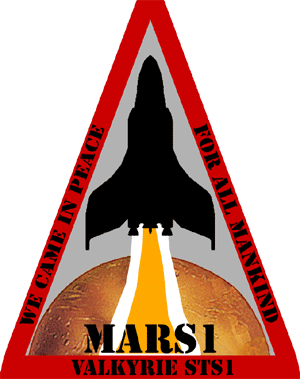
|
Designed and purpose-built for the first manned mission to Mars, Valkyrie STS1 claims many important firSTS. As the first inter-planetary spacecraft to carry humans, it was the first design to use Karigo’s revolutionary antimatter propulsion system. It was the first manned or unmanned spacecraft ever to successfully perform an aero-catch maneuver. But most importantly, Valkyrie STS1 flew the first humans to Mars and back.
Valkyrie STS1 can support a crew of three for up to two years.
|
|
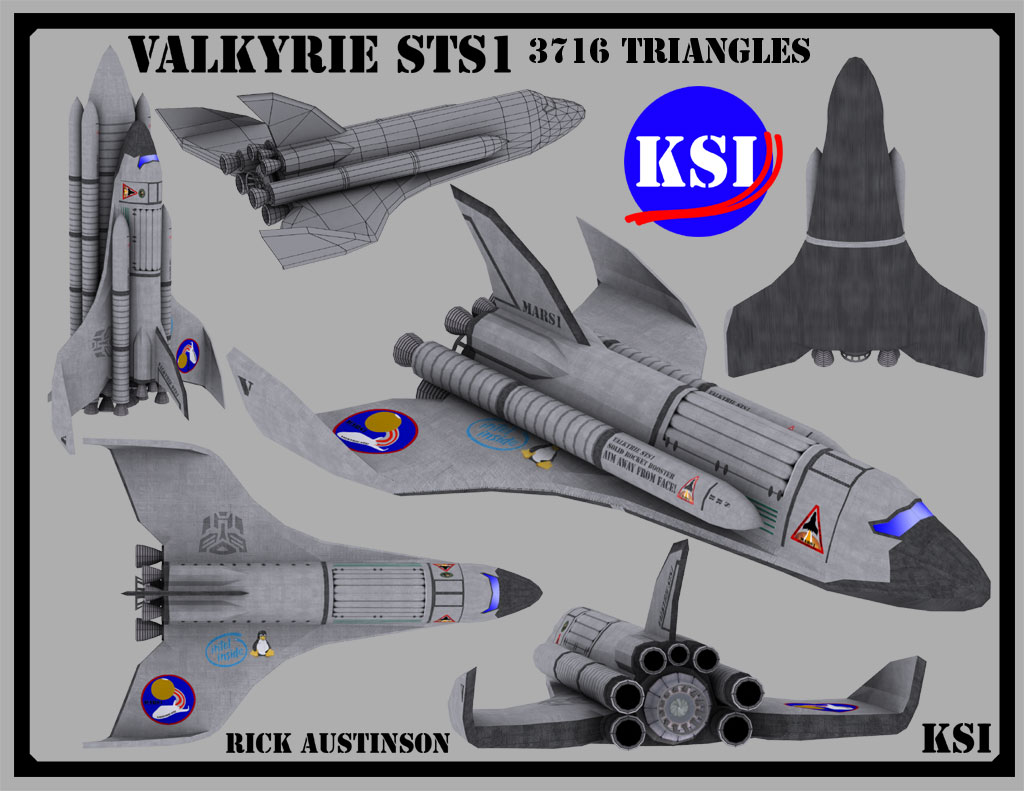
|
Built as a vital necessity to the Mars1 mission, the Karigo Space Initiative ‘Service Shuttle’ became a sort of outer space workhorse for the KSI. While similar in characteristics to the Space Shuttle flown by the United States, this KSI ship is actually very distinct. Like the Space Shuttle, it is a mostly re-usable, two-stage to orbit spacecraft which receives most of it’s thrust from a pair of Solid Rocket Boosters. Also like the Space Shuttle it incorporates a delta-wing formation and lands horizontally like an airplane.
Unlike the space shuttle, the KSI Service Shuttle only lands about once or twice a year. Primary electrical power for the Service Shuttle is provided by a radioisotope thermoelectric generator and can power the craft for up to eight years. Additional fuel and consumables are brought from the surface by heavy-lift ELVs, and crews rotate on and off using STS6. The Service Shuttle is also capable of operating above GTSO and in lunar and earth-moon LaGrangian orbits.
Following the completion of Stardock STS7, many Service Shuttles were launched directly into lunar orbits using an additional set of Solid Rocket Boosters. The Service Shuttle is now used primarily for moving personnel and cargo between Midway Station STS4 and Stardock STS7.
|

|
The imaginatively named Cargo Rocket STS3 is a heavy-lift Expendable Launch Vehicle or ELV flown by the Karigo Space Initiative. The first stages are similar in appearance to the Saturn V flown by NASA (Indeed Karigo admits fully copying the design) But actually has more in common with many Russian-designed vehicles. The first stage uses five F1-A inspired engines and is powered by kerosene oxidized by liquid oxygen. The four ‘break away’ boosters attached to the first stage can be either solid or liquid hydrogen/liquid oxygen(LH2/LOX ) fueled and are generally retrievable. The second stage uses a single engine and is also fueled by kerosene.
The third stage depends on the mission criteria. If the ship is being used to lift supplies into a LEO or GTSO, a third stage is often not needed. When sending payloads to STS7 or into lunar orbits, a small LH2/LOX fueled third stage is used. STS3 is capable of lifting as much as 100 tons into lunar orbit.
The Cargo Rocket was the first to introduce Karigo’s modular cargo pod, which has been used for practically everything since.
|
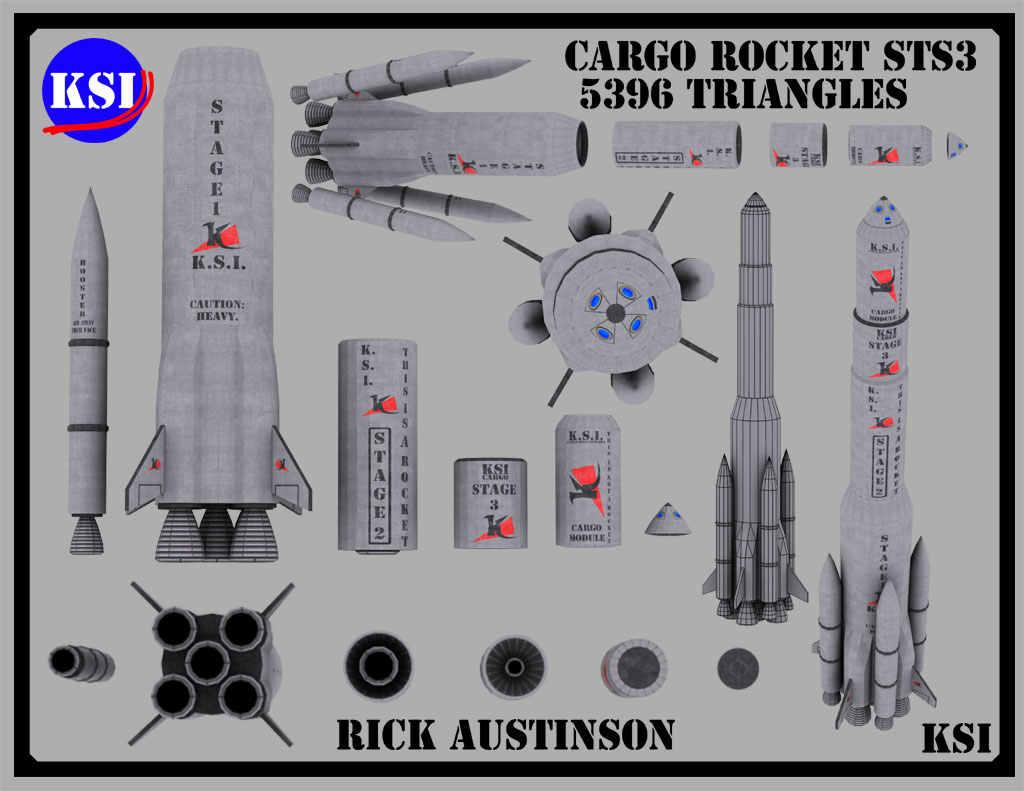
|
Midway Station, STS4, is the Ellis Island of the Karigo Space Initiative. Established in low-orbit in preparation for the Mars2 mission, Midway provides an important safe haven for the crews working tirelessly to support STS7 and the deep space missions.
Midway required four launches of the Cargo Rocket to first construct, and was the first space station established by the KSI. It was used for orbital completion of the second generation Valkyrie spacecraft, and the first generation Balistner.
And, if you care to fly with Karigo’s tourism division, Midway offers the cheapest destination in space available. For just $3,500,000USD you can take a ride aboard HyperX STS6 and spend a day on Midway.
|
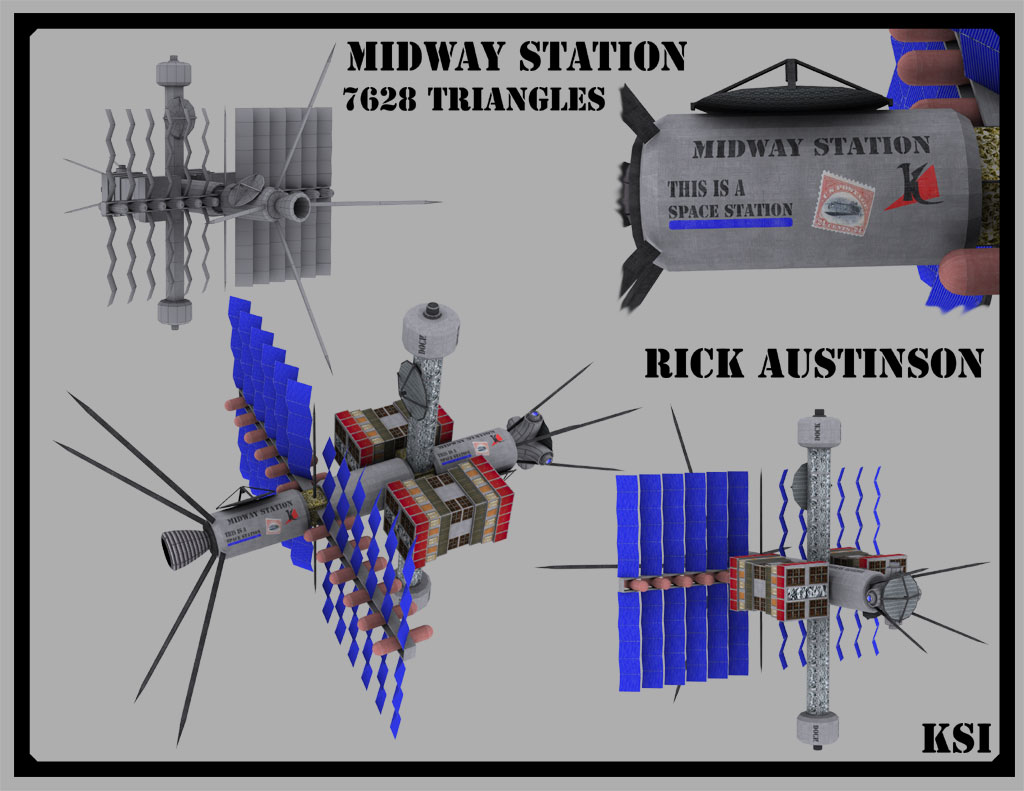
|
Though technically completed after HyperX STS6, Balistner STS5 was designed as a more generalized inter-planetary research vessel. Like it’s predecessor the Valkyrie, Balistner uses an antimatter drive an aero-catching for it’s mission. Unlike the Valkyrie, it lacks the ability to actually land on a planetary body. To overcome this, various purpose-built landing spacecraft have been carries on some of Balistner’s missions.
Valkyrie STS5 can support a crew of eight for up to two years.
|
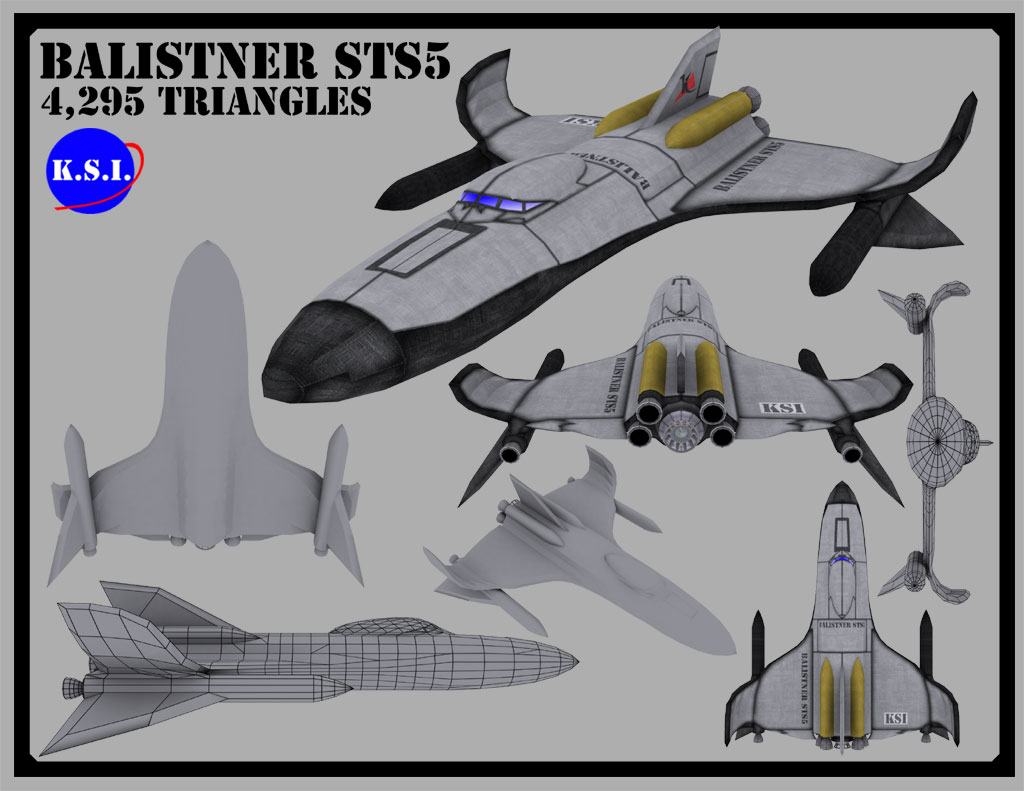
|
HyperX STS6 was named as a gentle poke at NASA’s Hyper-X Program, from which many of STS6’s technologies are drawn. HyperX also achieves a large number of it’s namesakes’ goals. It is a single-stage to orbit, horizontal landing and takeoff aircraft/spacecraft. In a word, it is a space-plane.
To achieve these rather lofty goals, HyperX uses four sets of engines: a linear aerospike for initial takeoff, ramjets for acceleration, a scramjet for escape velocity, and rocket thrusters for orbital maneuvering. Turn around time is extremely fast, as little as six hours, and the spacecraft can land on an ordinary runway.
Unfortunately the failing of HyperX comes in its incredibly meager payload of just twelve hundred pounds. Enough to carry two pilots and four passengers into LEO and dock with Midway Station.
A HyperX once landed and took off from Los Angeles International Airport, thus making it the world’s very first spaceport.
|
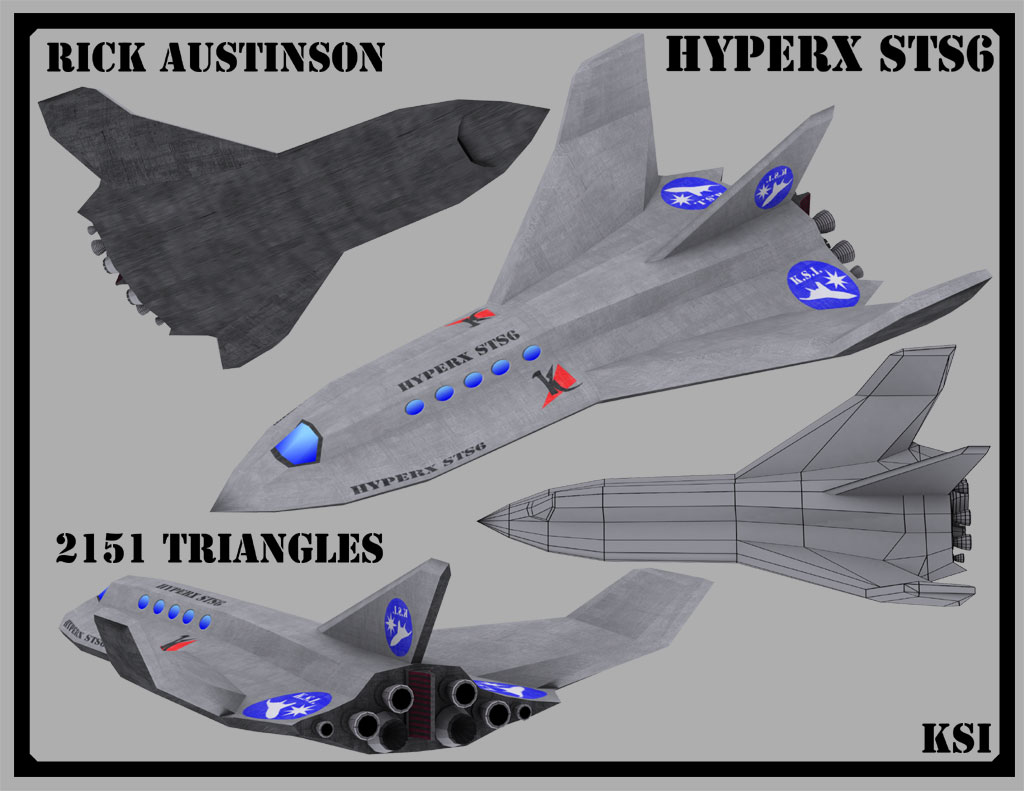
|

